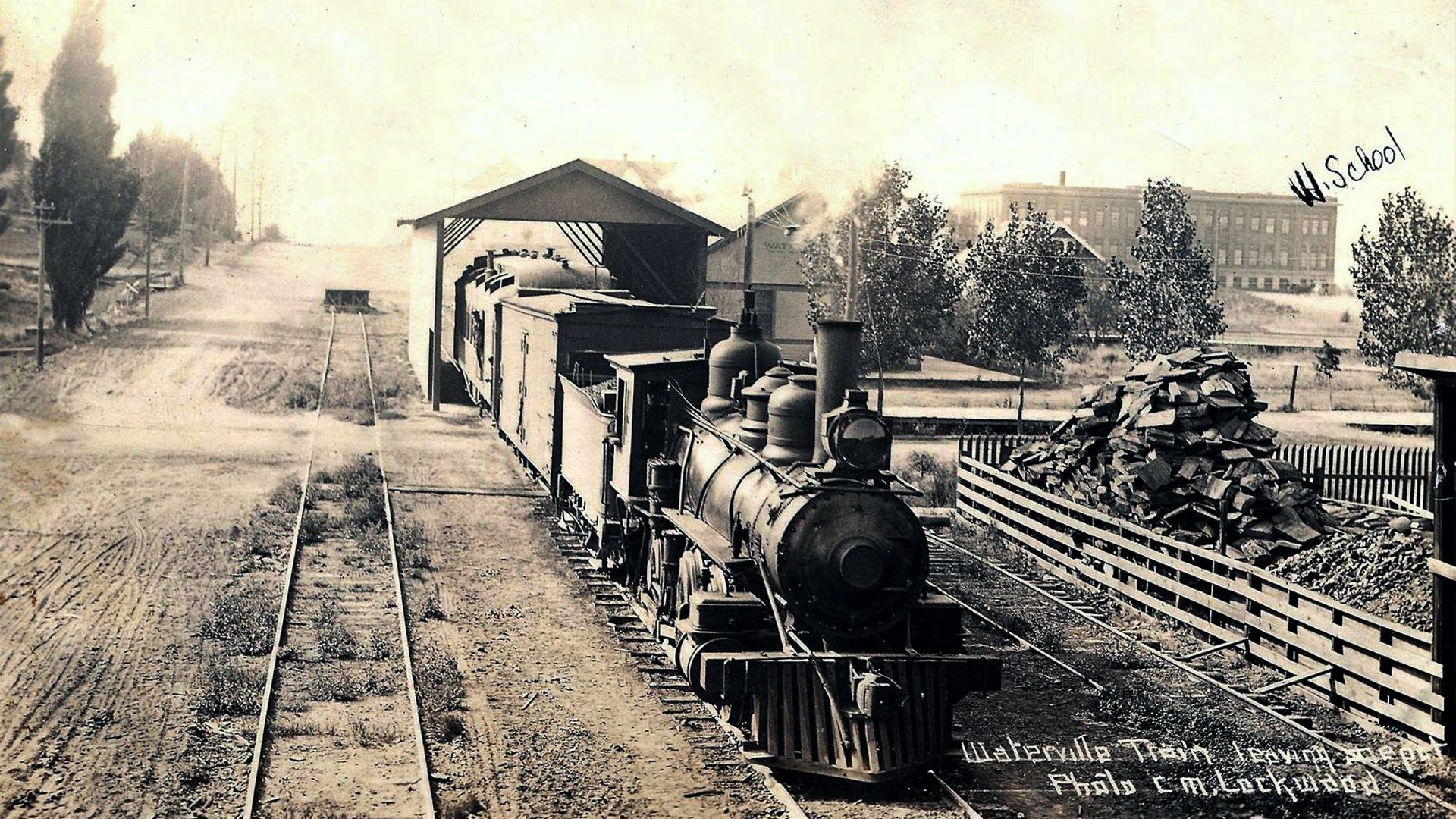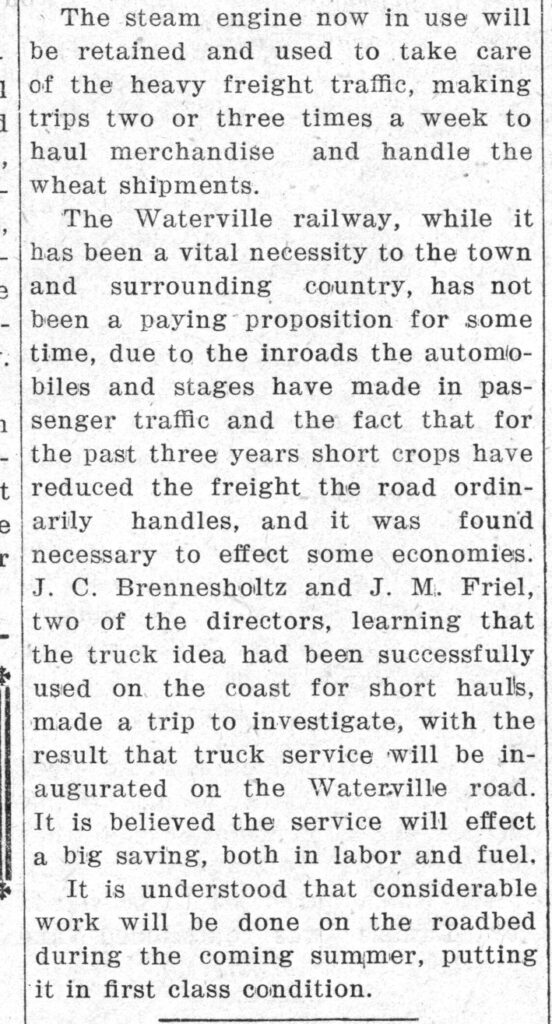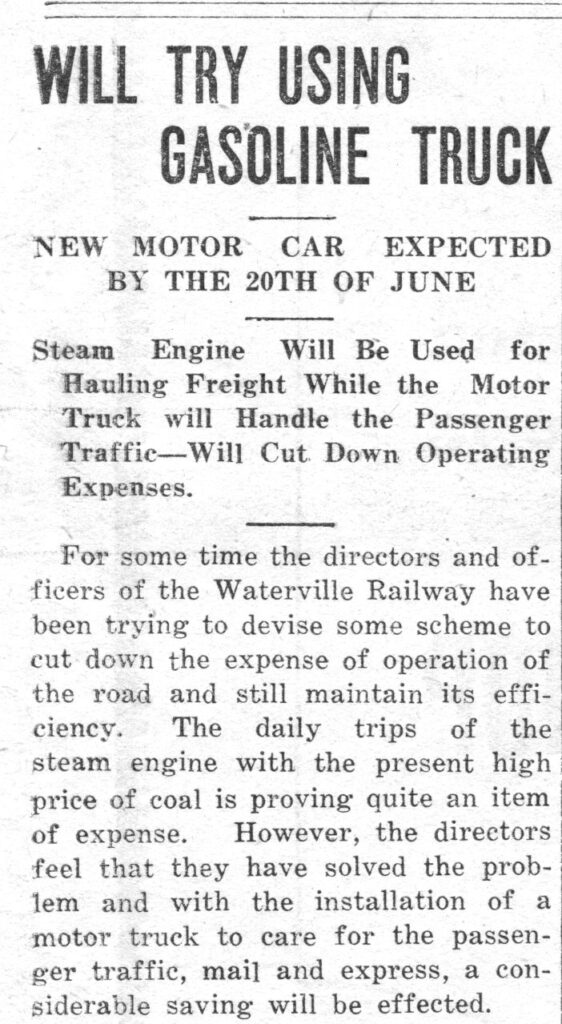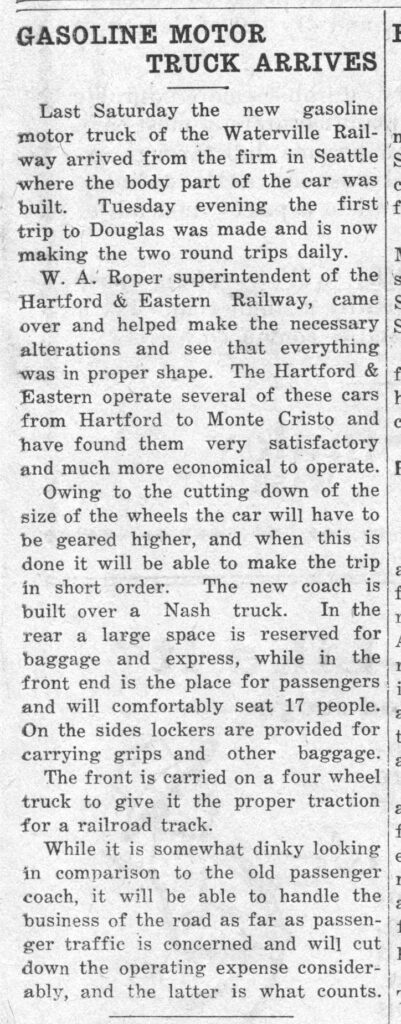
Waterville’s Railroad History took an amazing journey and ended up in Ripley’s Believe It or Not.
County Surveyor Predicts RR Coming, then, when the Mansfield to Columbia River Railroad was built in 1909, it by-passed Waterville.
Here’s what happened next:
Waterville Notified Of Costs.
Douglas County Residents “Subscribe”.
Wenatchee Enters Counter-Offer!
August 1909 – Douglas County Residents Rally Together!
Final Plans.
Details, Details and More Details!
Contract Awarded.
Horse Teams Used To Grade Access Road.
Grading Finished – Steel Rails Ordered!
Stockholders Meeting – Winter Stops Work
Getting Close, Really Close!
Success! All Aboard For Douglas, Wenatchee, Seattle and Portland!
Trains Now Running!
Trains Benefit All.
1,000 People At Event!
Morning Train North – Afternoon Train South
Success! We Did It!
In 1920, in order to cut-costs, Waterville Railway Company Buys Nash Truck For Rail Transport.





The Mansfield Branch Line was constructed by the Great Northern Railway in 1909, and was completed in just 9 months. Because of extra costs, Waterville was not included in the original track laying.
Starting from the Columbia River and ending in Mansfield, the 60.62 miles of track cut through the southern portion of the Moses Coulee, snaked up Douglas Creek and made its way across the vast wheat fields of the Waterville Plateau.
The train made scheduled stops at Palisades, Alstown, Douglas, Supplee, Withrow, Touhey and Mansfield to drop off and pick up loaded 40 ft boxcars of grain from The Waterville Union Grain Co. (a predecessor of the Central Washington Grain Growers, Inc.).
The line was completed in October 1909 as the Moses Coulee Branch, connecting Mansfield to Wenatchee.
From the beginning until about the late 1940s, both freight and passenger service shared the rail, but because of declining sales the passenger train was eventually removed. The train went from 5 day a week service to down to 2 to 3 days a week service, and eventually to Sunday only in the 1970s and 1980s.
The branch line was rebuilt after the floods of 1938 and 1948. In 1948, the estimated cost of repairs exceeded $1,000,000.00. Several wooden bridge trestles and track had to be repaired in order to keep the train operational. Great Northern Railway’s records show that 49 wooden trestles were built along this stretch the track, the most of any branch line in the United States. Also, one wooden tunnel was constructed near the falls at Douglas Creek, and in 2000 the tunnel collapsed from years of neglect. In 2000 both ends were closed up with thousands of cubic yards of soil.
The Mansfield branch was one of the last branch lines in the country to still use boxcars to move wheat. This method, by the early 1980s, was considered obsolete. New covered hoppers by this time were doing all of the grain hauling and the Mansfield Branch Line was too light to carry these cars. This was because the 68-pound-per-yard rail could not handle the larger hoppers that Burlington Northern Railroad had in its inventory. This and the increase of truck transportation led to the demise of the line.
The Great Northern Railway built and maintained ownership of the line from 1909 until 1970, when the newly formed Burlington Northern Railroad (BN) was transferred ownership of the line during the merger forming it. On March 2, 1985, the last train made its run closing 76 years of granger railroading history in Douglas County. The last train consisted of two BN EMD GP39-2 locomotives #2730 & #2738, 40 boxcars and one caboose.
As of 2008 the abandoned railroad right of way is a hiking trail.